How to Grow Wasabi
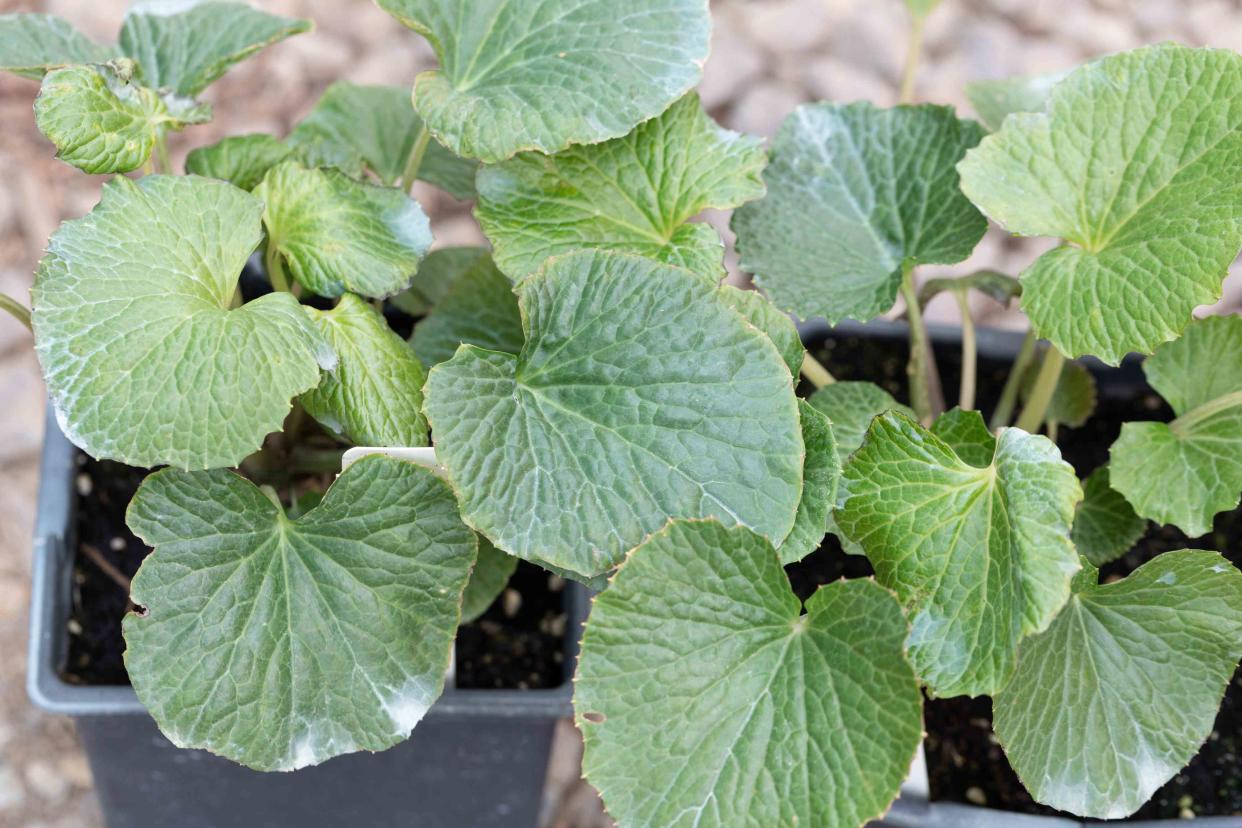
The Spruce / Ana Cadena
Wasabi, also known as Japanese horseradish, is the source of the hot, pungent seasoning popularly served with sushi, but also used to season nuts and other savory snacks. Its strong taste and heat are well-loved by those who like spicy flavors. However, it has been said that some of the commercial wasabi served in restaurants is not 100 percent wasabi but is cut with mustard or European horseradish and tinted with food coloring.
Adventurous home cooks enjoy using wasabi, too, and you can grow the real thing in your own backyard. The plant prefers complete shade, so it is ideal for gardens that don't get a lot of sun. But Wasabi is a finicky plant, and serious growers often turn to greenhouse culture to grow it. Wasabi is usually planted from potted nursery starts in the early spring. The rhizomatous stalk will not be ready for harvest until the second year.
Can You Grow Real Wasabi at Home?
You can grow real wasabi at home, but the best way to do so is with plant starts, not seeds. One reason for this is because there is some confusion concerning growing wasabi from seed. Because wasabi has particular growing conditions, it tends to be very expensive to grow. Acquiring wasabi plants outside of Japan can be difficult. This has led to a wide demand for seeds for growing wasabi.
However, even if you can acquire seeds labeled Wasabia japanonica, there is some chance the seeds may actually be for closely-related brassica, such as mustard greens or arugula. You can get seeds to grow "wasabi greens" but this is also not true wasabi. If you want to grow plants from seeds, find a reliable source for seeds.
Botanical Name | Wasabia japonica |
Common Name | Wasabi, Japanese horseradish |
Plant Type | Perennial vegetable |
Size | 24 inches tall |
Sun Exposure | Full shade |
Soil Type | Moist, rich, well-drained |
Soil pH | 6.0–7.0 (slightly acidic to neutral) |
Hardiness Zones | 8–10 (USDA) |
Native Areas | Japan |
How to Plant Wasabi
Growing wasabi plants is frankly difficult because their growing needs are so specific. Wasabi requires shady conditions, uniformly moist but not wet soil, and temperatures between 45°F and 75°F without a lot of temperature swings. If you have such conditions in your garden, wasabi can be planted in the spring, preferably from well-advanced potted nursery starts at least 1 foot tall. If conditions are less than ideal, wasabi can be grown in containers, which can be moved around to keep the plant in perfect conditions.
If planting in the garden, choose a shady location with well-drained, slightly acidic to neutral soil. If your soil pH is outside this range, you will need to check it frequently and add the necessary amendments to adjust the pH.
Wasabi Care
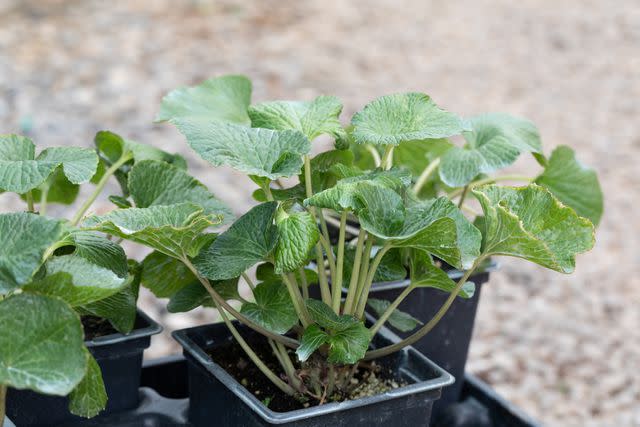
The Spruce / Ana Cadena
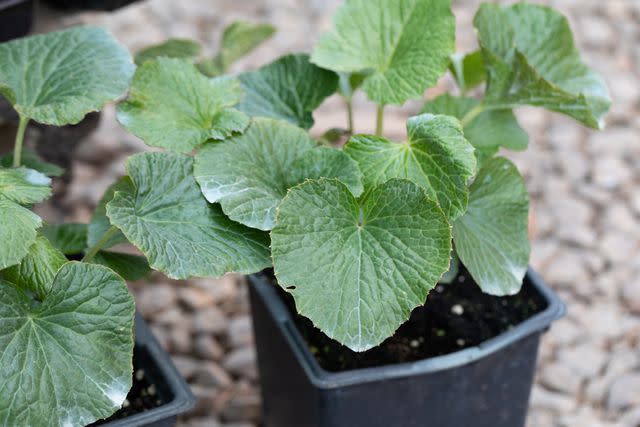
The Spruce / Ana Cadena
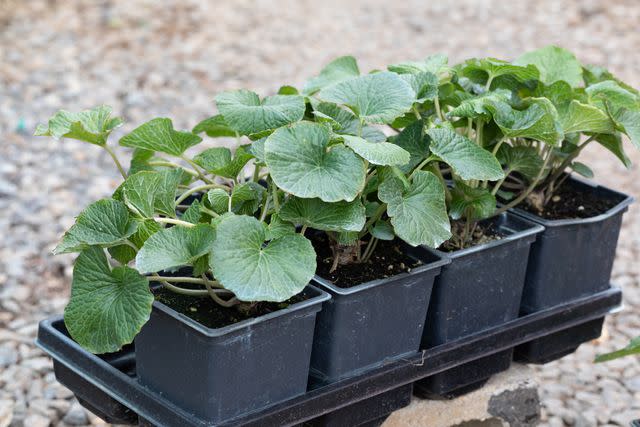
The Spruce / Ana Cadena
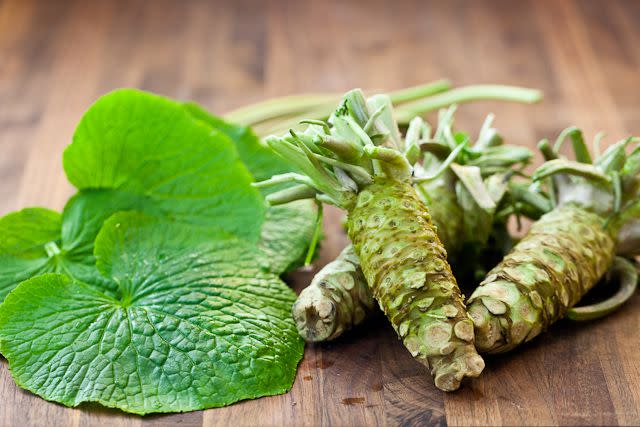
Light
Direct sunlight is not tolerated well by wasabi, so make sure the plants are shaded. You can create a shade barrier with fabric (shade cloth) or a folding screen. Container plants can be moved around to keep them in the shade.
Soil
Wasabi plants in the garden require rich, consistently moist soil with a slightly acidic to neutral pH. If growing in containers, use a one or two-gallon pot with a 10-inch planting depth. Mix up some rich soil with compost; slightly heavier than potting mix medium, so it will hold moisture. Plant your nursery starts so that they stand upright, leaving part of the rhizome exposed.
Water
Water your wasabi well at planting and then regularly after this. Misting the plants will also help keep them cool. Take care not to overwater as these plants don't tolerate waterlogged conditions.
Temperature and Humidity
One important consideration for growing wasabi is that it tolerates only a narrow temperature range, preferring constant temperatures of 45°F to 75°F.
Temperatures below freezing or above 80°F can kill the plant, so these extremes should be avoided. Some coastal locations, such as the Pacific Northwest, provide the suitably cool, temperate weather for growing wasabi. Planting in containers means you can move the plants if the thermometer suddenly gets too high or too low.
If the leaves get droopy or wilted, move the plants to shade and mist them a bit.
Wasabi Varieties
There are a number of popular cultivars of wasabi, including:
'Daruma' is more tolerant of high temperatures than most varieties.
'Fuji Daruma' is a fast-growing variety, ready to harvest in the same year it is planted.
'Green Thumb' is a good choice for edible leaves.
'Sanpoo' was developed to grow well in poor soils.
'Mazuma' is a slow-growing variety that takes up to three years for the roots to mature.
Harvesting Wasabi
You won't be able to harvest the rhizomes of most wasabi plants until the second year, so it's important to care for them attentively. The plants will be mature enough for pulling within fifteen months to two years. However, the plants will begin producing leaves within about eight weeks, so you can enjoy the leafy bounty of your plants while you wait for the mature stalks. It's good to harvest these leaves to keep the plants neat and healthy.
After your first harvest, let the plant grow more leaves and harvest them every 6 to 8 weeks. If you can't eat them all or give them to friends, the leaves can be blanched and frozen like any greens, or you can make a pesto-like sauce for pasta and rice and freeze it.
The stems can also be frozen, but are best eaten fresh. They're crunchy and make a good addition to stir-fry dishes or salads.
Pruning Wasabi
Removing any wilted leaves that don't perk up after misting. This can help to avoid any spread of disease or powdery mildew.
Propagating Wasabi
In theory, wasabi can be propagated from seed or from offshoots, but in practice most people simply buy new transplants once the old plants are fully harvested. If you do want to attempt propagation, snip off some of the little offshoots that appear at the base of a mature plant and plant them in a 50:50 mixture of sand and compost. In about two months they should develop sufficient roots to be transplanted into the garden or into pots.
Wasabi seeds are difficult to germinate, so they are hard to find, even from commercial suppliers.
Common Pests and Plant Diseases
Several pests may be problems with your wasabi plants. It's in the Brassica family and so any bugs that love to eat cabbage or broccoli, such as cabbage worms, will also enjoy munching on wasabi.
Remove slugs by hand, and aphids can be removed with a steady stream of water or a soft cloth. Make sure cool temperatures and shady conditions are maintained as this will help deter pests. Insecticidal soaps are not recommended for wasabi.
If any fungal disease is present, copper spray or baking soda spray can be used.
What Part of a Wasabi Plant Can You Eat?
The entire wasabi plant is edible. The thick stalk (actually a rhizome) of the mature plant is what is ground up for making wasabi sauce or paste. The stems and leaves are also edible and can be used in salads, soups, smoothies, or stir-fry dishes. The stems can be chopped up like celery or chives to mix in with tuna or egg salad or to garnish potatoes.
Frequently Asked Questions
Can you grow wasabi in the United States?
Yes, wasabi can be grown in the United States from seeds or plant starts, but plant starts are recommended due to confusion about the labeling of true wasabi seeds. Plant starts are difficult to acquire outside of Japan.
What is the secret to growing wasabi?
The secret to growing your own wasabi is meeting its very specific growing conditions. It likes high humidity and prefers a very specific temperature range, and does not do well in direct sunlight.
How long does it take to grow wasabi?
Wasabi normally takes two years to grow to maturity for harvesting.
Read the original article on The Spruce.

